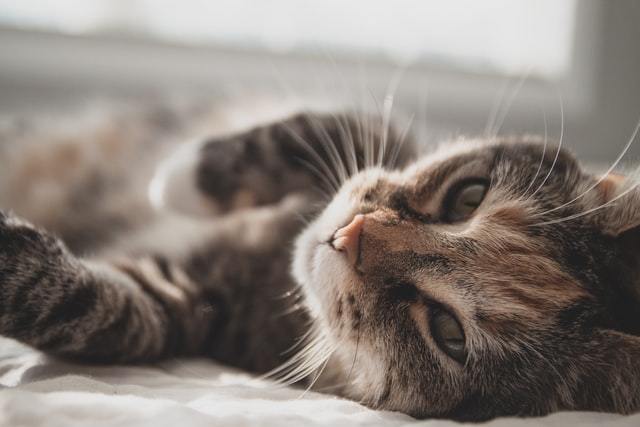As many as 90% of cats over the age of twelve experience degenerative joint disease. Most cat owners are eventually going to be faced with a situation where their once lithe and athletic fluff ball begins to slow down.
It can be a tough adjustment, not just for your cat but for you too.
Fortunately, there’s a lot you can do to help a cat with arthritis continue to enjoy an active life. In this guide, I’ll run you through six of the most effective ways you can help a cat deal with joint pain.

1. MAKE IT EASIER TO GET UP HIGH
Most cats love to get up high. You’d think that the onset of joint pain would convince a cat to abandon its endless pursuit of that perfect perch, but nope. That’s just not how most cats operate.
The best thing you can do is work with rather than against your cat’s leaping instincts.
If your cat likes getting up on high shelves, consider placing a tiered cat tower nearby. If they love to get up on the sofa with you at night, a short stool may be all the boost they need to get their daily dose of lap time with minimal pain.
The idea here is to help your cat indulge its regular instincts in ways which are less challenging on the joints.

2. SET YOUR CAT UP WITH NEW COMFORT ZONES
While helping your cat reach its regular perches is important, you might also want to think about encouraging new comfort zones.
For most cats, their idea of a pleasant afternoon is to get somewhere quiet, dark and warm for a good snooze. Have a look around your home for ground-level locations which meet these cattish requirements.
One great option is to purchase an inexpensive heating cat bed and to place it in a closet or under a bed. They’ll still get that feeling of being tucked away without having to exert themselves quite so much.

3. MAKE THE NECESSITIES AS ACCESSIBLE AS POSSIBLE
So, you’ve got Colonel Fluffington’s comfort zones sorted out. Now it’s time to take a close look at making their food, water and litter box as accessible as possible.
Food and water locations should be placed where your buddy can reach them without effort.
One of the most common problems an arthritic cat faces is using a conventional litter box. Stepping over the sides can challenge their joints and eventually they’ll associate their litter box with pain, avoiding using it altogether.
It’s a great plan to invest in litter boxes which are large and easy to step into. You may also need to position one or more litter boxes in easily reached locations if your cat’s mobility is greatly compromised.
And, if you want to really get the ball rolling on your cats joint health - check out our Hip n Joint Vitalize Drops (which offer a full spectrum, science backed joint support for cats - that not only adds a real zip to your senior kitties steps... but also tastes delicious) - Check it out here

"An eighteen year old with little back leg muscle walked hesitating with each step until she willing lapped up her new med. Today , she walks in the grass , hops from chair to chair and smiles alot"
- Mary G
"Our cat Pinkie has suffered from hip problems for a couple of years. This product has her acting like a young kitten, very active and playful. Great product!!!!!"
- David J
Hopefully these ideas are a great start. When you’re ready for more tricks for keeping your cat’s arthritic ouchies at bay, click here to read Part 2.



